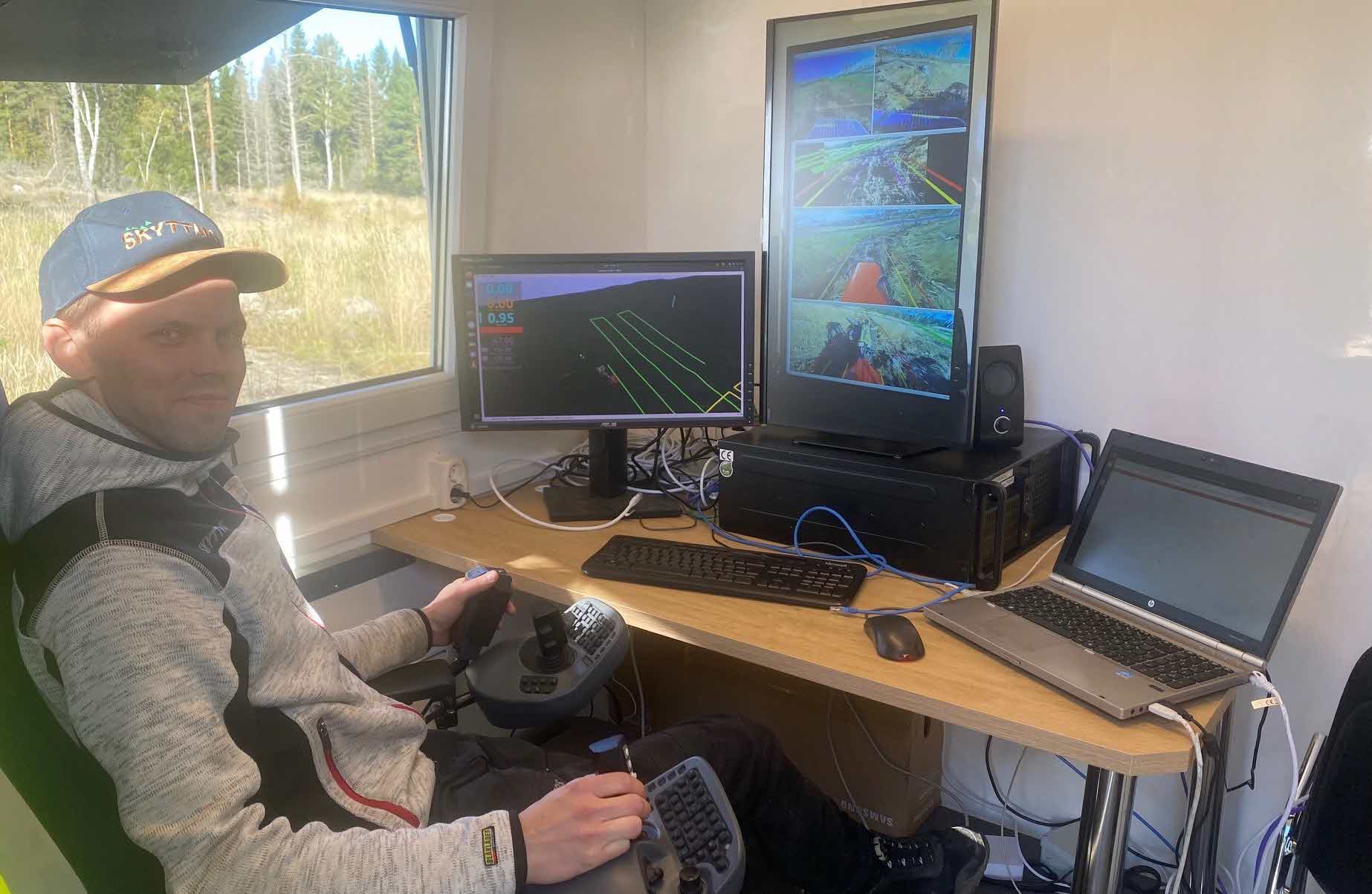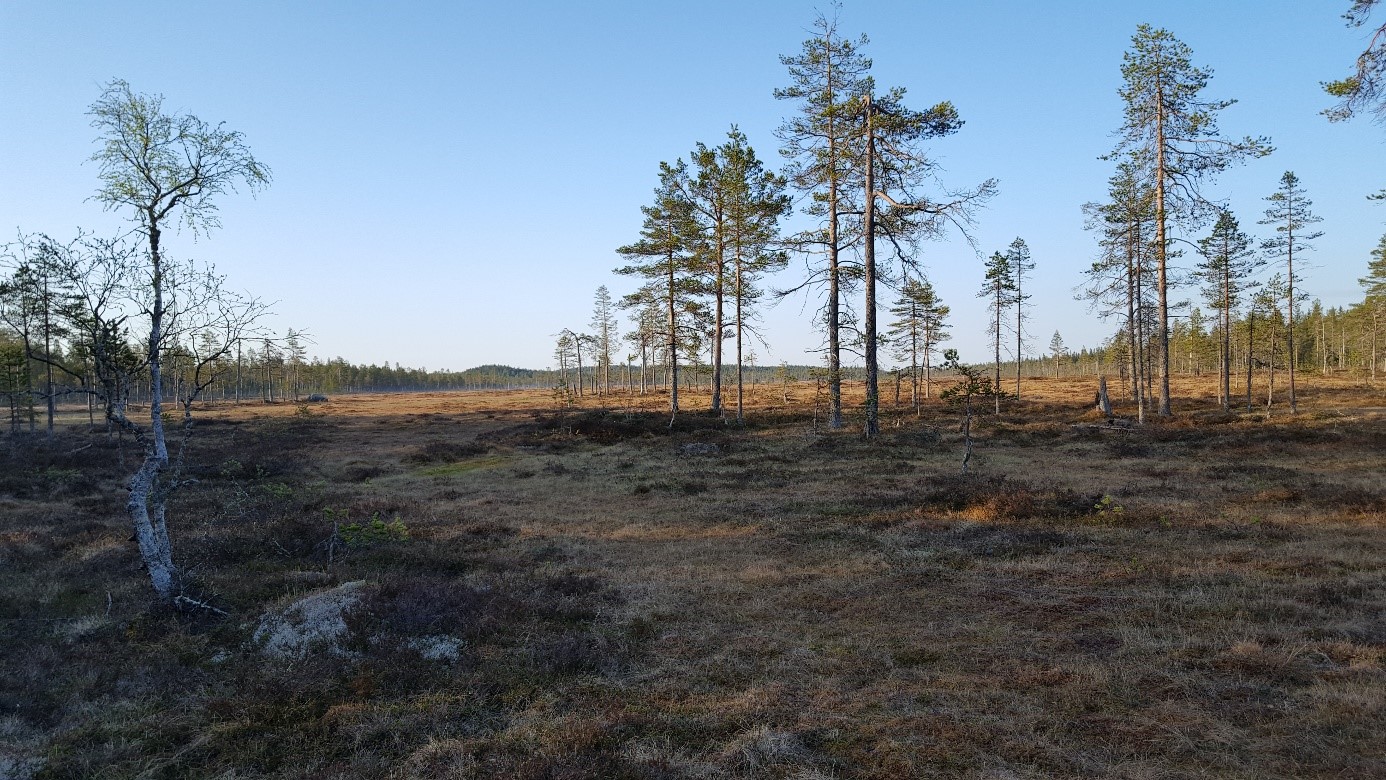
Real operation for remote-controlled soil scarification machine from SCA
- News
- Forest
- För skogsägare
A soil scarification machine has now been remotely controlled in real operation. On October 1st, Skogforsk tested a modified machine loaned by SCA. The machine was operated on a clear-cut area by a driver sitting in a cabin at the turning area. “The great benefit of being able to remotely control soil scarification machines is that the working environment for the machine operators is significantly improved,” says Magnus Bergman from SCA Skog’s technology and digitization staff.
The test run was conducted on Sveaskog’s land just southeast of Almunge in Uppsala county. The event attracted around 30 external stakeholders, mainly from the forestry sector. The demonstration is an important step forward for the technical development of forestry and efforts to improve the working environment.
By controlling the machine from a station outside the cabin, operators can avoid the full-body vibrations that are common during soil scarification. This means that the work environment risks are reduced and the operators get a better working environment.
“Soil scarification can be quite tough for the operators but, on the other hand, it is the easiest task to solve with remote control. The operator needs to be on site at the clear-cut area, but can step out of the machine when the terrain becomes tough and instead operate the machine from, for example, a cabin. This provides a significantly gentler working environment,” says Thomas Persson, business developer at the technology and digitization staff, who was present at the demonstration on October 1st.

Valuable insights
During the demonstration in the Uppsala area, the machine operator sat in a small rest cabin at the turning area, about 300 meters from the over 10-hectare clear-cut area.
“It is three very experienced soil scarification drivers from Skyttmos Skogsentreprenad AB who have tested remote controlling of the machine, which is very important. They have a lot of experience and knowledge and can contribute valuable insights to the development work. One comment was, for example, that it is good to have a microphone in the machine so that the operators can hear the engine sound and other noises during operation and get the right feeling, even though they are not sitting in the machine and driving,” says Thomas.
Great opportunities
The remote control technology, which Skogforsk has developed over several years, can also be used on other types of forestry machines. In addition to improving the working environment, the technology can lead to more flexible workplaces, where machines could be controlled from an office, which can facilitate the recruitment of future machine operators. Furthermore, efficiency can increase through the possibility of controlling multiple machines simultaneously.
“Now it remains for us to evaluate and analyze the concept in terms of, for example, the operator’s performance and workload,” says project manager Martin Englund at Skogforsk.
The R&D project, funded by the Nils and Dorthi Troëdsson Research Foundation, is being carried out in collaboration with SCA Skog, Bracke Forest, Sveaskog, and Skyttmos Skogsentreprenad AB.
Photo: Thomas Persson/SCA


